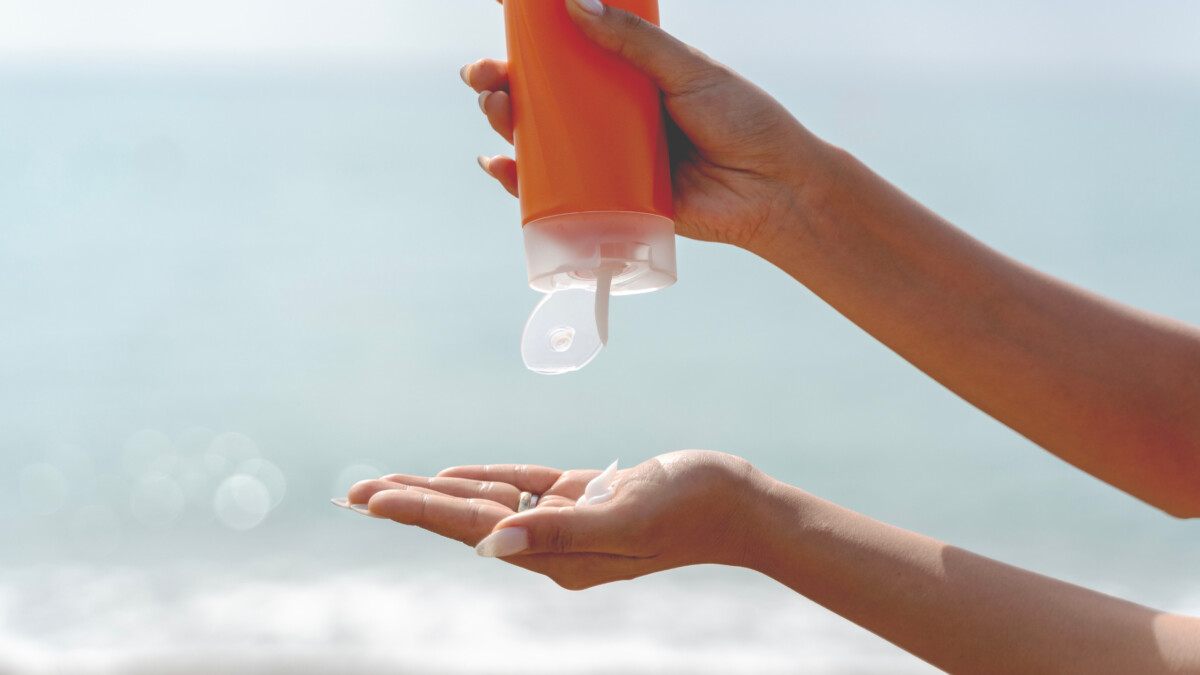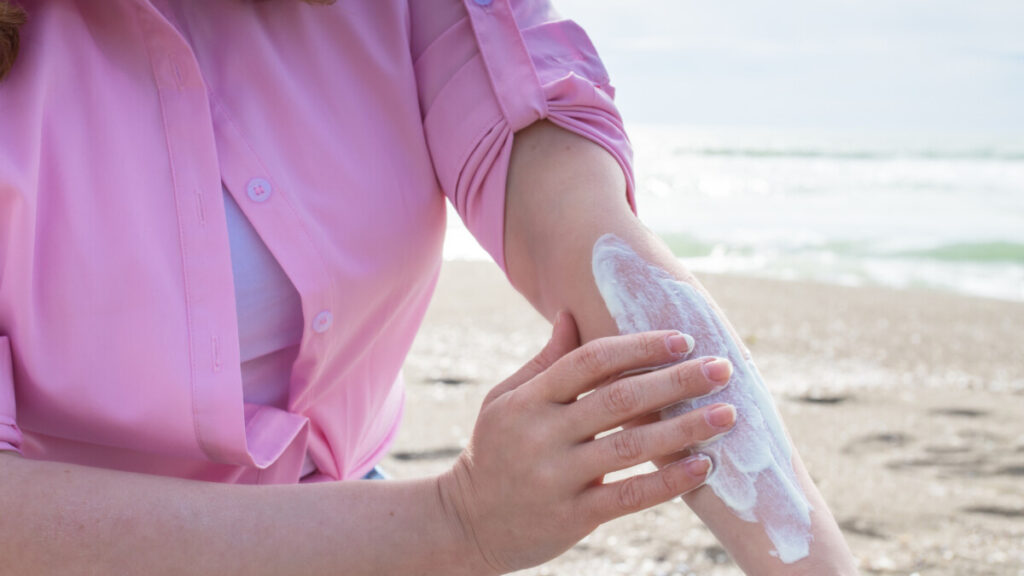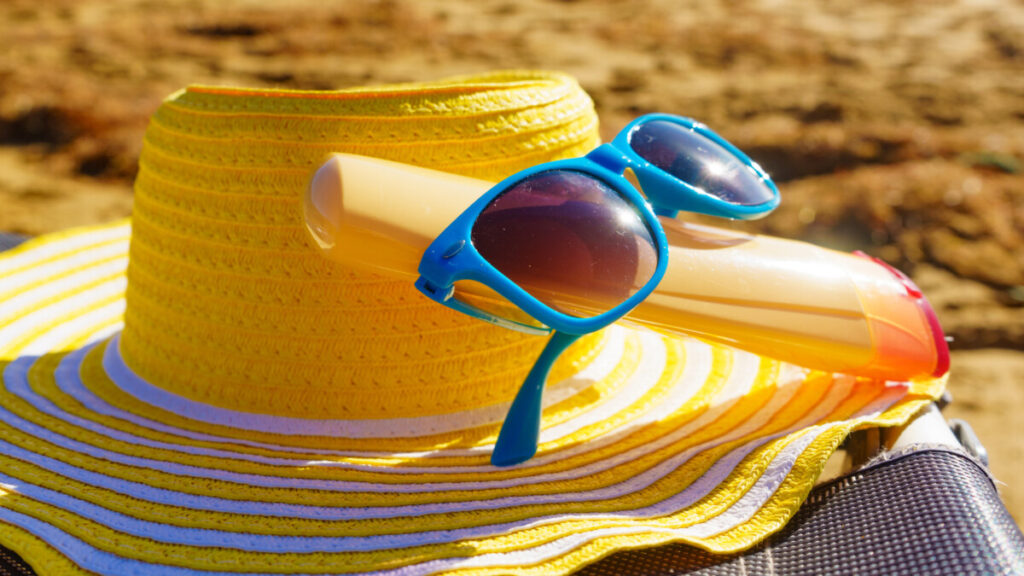
Sunscreen is crucial, but knowledge is invaluable. In our bi-monthly series, “Psst! Here’s What You Should be Asking Your Dermatologist,” we explore the essential questions you ought to pose to your dermatologist. Discover the answers you’ve been searching for and empower yourself to make well-informed decisions regarding your skin health.
This month, we had the opportunity to speak with Dr. Susan M. Swetter, Professor of Dermatology and Co-Director of the Pigmented Lesion and Melanoma Program, as well as Co-Leader of the Cutaneous Oncology Program at Stanford University Medical Center and Cancer Institute. Our conversation covered everything you need to know about sunscreen, delving into essential insights and advice.
What is SPF?
SPF or Sun Protection Factor is a measure of ultraviolet-B (UVB) photoprotection. It is a factor that allows you to spend longer in the sun, specifically, when exposed to UVB rays, without getting a sunburn. An SPF of 10 should allow you to stay in the sun 10 times longer before you sunburn, which is measured by your Minimal Erythema Dose or MED. Sunscreen postpones the amount of time you can spend in the sun without burning, but it doesn’t prevent the DNA damage caused by the sun.
I recommend the use of broad-spectrum sunscreens, which cover both the shorter wavelengths of UVB and the longer wavelengths of UVA, which penetrates more deeply into the skin. We know that UVA causes skin cancer (through studies of tanning bed use), photoaging, drug sensitivity to certain medications, cataract formation, and it exacerbates photosensitive conditions like lupus. On the other hand, UVB causes sunburn, your tanning response, and it’s a major contributor to developing melanoma and other skin cancers. Ideally, you want to filter out damaging solar radiation across the UVA and UVB spectrum.
In the US, most sunscreens provide adequate SPF for UVB filtration; however, they do a poorer job of protecting against long-wavelength UVA radiation. In the US, broad-spectrum sunscreens use a critical wavelength of 370 nm, while in the EU, broad-spectrum sunscreens extend through the entire UVA range (up to 400 nm) and some even extend into the visible light range. Unfortunately, most consumers aren’t aware of about how effective or ineffective their sunscreens are at providing broad UV radiation coverage. In addition, there are currently only 16 approved UV filters in the US (10 of which are commonly used), compared to 29 filters in the EU, many of which are more effective and deemed safe.

Who should use sunscreen?
People who have lighter skin tones and who are especially sun-susceptible or sun-sensitive should be vigilant about using sunscreen and other means of photoprotection, such as sun-protective clothing, hats, and sunglasses. Individuals who tend to sunburn and have much higher rates of skin cancer compared to people with darker skin tones. Individuals with darker skin tones have a higher intrinsic SPF (~13.4) in their skin, compared to SPF of 3.3 in lighter skin phototypes. As such, skin cancer and melanoma rates are much lower in people with darker skin compared to lighter skin, and sun protection messaging differs.
We are seeing increasing rates of melanoma in people with darker skin tones, particularly in Hispanic, Asian, and some lighter-skin Black populations. However, people with very dark skin tend to get much less skin cancer because of the inherent protection of the melanin within their skin.
What’s the difference between a mineral and a chemical sunscreen?
Chemical sunscreens absorb and deactivate harmful UV light. Mineral sunscreens deflect and scatter UV light.
The two mineral sunscreen ingredients you’ll find in the US are zinc oxide and titanium dioxide, which are typically micronized to provide a less opaque application.
I’m an advocate of chemical sunscreens over mineral sunscreens primarily because of performance issues. Most of the mineral sunscreens alone are not that effective. You need at least 10% zinc oxide concentration to reach the critical UVA wavelength of 370 nm, and several mineral sunscreens now offer a more sheer/clear application with over 20% zinc oxide. In reality it would take 25% zinc oxide concentration to reach the far UVA spectrum of 400 nm, but a product with 25% zinc oxide is basically like the thick zinc oxide preparations used in diaper cream and not cosmetically acceptable.
Many of the mineral sunscreens on the US market contain less than 10% of zinc oxide, and that doesn’t not provide much broad-spectrum UV filtration. These lower concentrations of micronized zinc oxide provide an SPF of less than 6 and generally have to have chemical UV filters added to increase the mineral sunscreen’s SPF.

The sunscreen testing that was done in Consumer Reports in 2015 and 2020 showed that a significant proportion of the sunscreens do not live up to their advertised SPF, and many of those products contained titanium dioxide an zinc oxide as the active ingredients (ie, mineral sunscreens).
If you prefer a mineral sunscreen, look for brands that have the mineral sunscreens with micronized zinc oxide great than 20% concentration. Some of those are in a clear zinc formulation, which is nice because it’s a little more cosmetically elegant.
In the US, the chemical sunscreens perform pretty well, but they don’t filter all the way to the 400 nm range for far UVA. For US sunscreens, I’ll typically choose a broad-spectrum chemical sunscreen (containing avobenzone and octocrylene as the key UV filters) over a mineral sunscreen. But overall, I prefer the chemical sunscreens from abroad. Those are my go-to products since they have more uniform and greater UVA absorbance and are truly broad-spectrum in terms of UV filtration.
What advice do you give your patients about sunscreen?
I discuss the availability of sunscreens, both mineral and chemical, and those that are available in the US vs abroad (typically manufactured in the EU). For my patients with melanoma and those with red-hair, very light skin and are super sun-sensitive, I usually recommend that they obtain their sunscreens from abroad. I give them information on various online pharmacies where they can obtain sunscreens from the EU, and I tell them to buy chemical sunscreens while traveling (which can be less expensive compared to ordering them online). What I’m impressed with is that almost every sunscreen that I look at when traveling abroad contains multiple superior UV filters compared to the ingredients in US sunscreens.
Unfortunately, chemical sunscreens in the US are suboptimal compared to the chemical sunscreens from abroad. Sunscreens from abroad have a choice of at least 8-10 different UV filters providing long-range UV filtration (those that protect against UVA rays), and they work better, reaching the 320-400 nm (UVA) wavelengths more effectively. In the US, the best that our sunscreens can do is to reach about 380 nm. They are just not getting to that far UVA spectrum for coverage.

The best chemical sunscreen ingredient for UVA filtration in the US is called avobenzone. It’s stabilized with another filter called octocrylene, because the avobenzone is photolabile and breaks down in the sun in about 30 minutes on its own. But avobenzone still only takes us to the critical 370 nm wavelength, so it’s not covering the entire UVA spectrum.
Outside of the US, there are many excellent UV filters which are incorporated into sunscreens. The ingredients are most recognizable by their trademarked names, suchs as Mexoryl® (drometrizole trisiloxane), Uvinul® (ethylhexyl triazone) and my favorite, Tinosorb® M (bisoctrizole) or Tinosorb® S (bemotrizinol). Overseas, the ingredients are listed by their full chemical name, so look for “triazine” or “triazoyl” in the product label. “TriAsorB” is a newer UV filter from abroad that covers far UVA and even some visible light (400-450 nm).
Again, the reason I recommend that patients acquire sunscreens from outside the US is that they are better. It’s legal to purchase them, since they are over-the-counter products – like buying a lotion or a perfume from abroad.
In 2014, the Sunscreen Innovation Act was passed by then President Obama to try and force the FDA to comment and decide on pending sunscreen applications from EU manufacturers, which were initially filed in 2002. The fast-track application through the FDA was supposed to have taken 180 days to say “yes” or “no” to 8 European sunscreen filters based on their safety and efficacy data as over-the-counter products for at least five years. To date, the FDA has not approved these superior UV filters in our sunscreens, though the FDA is revisiting this topic and weighing the need for further studies prior to approval in the US. Twenty-two years later, it remains frustrating that we have fewer and less effective sunscreen ingredients in the US compared to many other countries.
What does GRASE mean?
GRASE is short for “generally regarded as safe and effective.”
The FDA has looked at sunscreen safety and absorption, and in particular two published studies. These were very small, experimental studies looking at a number of chemical sunscreens (not mineral) with a small number of volunteers, 24-48 people. The studies showed that sunscreens could be absorbed in what’s called a maximal use experimental setting. People applied mainly US sunscreen ingredients to 75% of their body, four times per day for four days and had their blood levels checked for sunscreen absorption. The investigators found that some of the US ingredients were above the threshold to wave non-toxicology studies, but they didn’t show harm to humans. As a result, the FDA isn’t suggesting that people shouldn’t use sunscreens, but rather the need for further studies that look at absorption of ingredients through the skin.
Currently, only those sunscreens that can’t be absorbed through the skin, like mineral sunscreens, are deemed GRASE. This status will remain until EU sunscreen manufacturers perform the studies to the FDA’s satisfaction.

Why can’t I find SPF 100 in stores anymore?
Studies have shown that if you properly apply sunscreen, 93% of UVB would be blocked by SPF 15, 96% would be blocked by SPF 30, and 98% by SPF 50. It’s a logarithmic curve of UVB protection that you are getting from the sunscreen. Theoretically, you do not gain that much by a higher SPF if you are applying it correctly. The problem though is that consumers put on about ¼ to ½ of the amount of sunscreen they actually need to reach the products advertised SPF.
Consumers are not putting on the amount of sunscreen that will give them the coverage of the product as advertised. They are not getting an SPF of 30 if they are dabbing a tiny bit on their nose or a thin application. You have to put on a significant amount of sunscreen, about a shot-glass full. A teaspoon to the face, a teaspoon to each arm/leg, and a tablespoon or two to the trunk is necessary – it’s a lot of sunscreen! In addition, as I noted earlier, some of the products are underperforming even if applied at the recommended amount.
There are some data to suggest that in people who are very sun-sensitive, a higher SPF might be helpful. It’s probably more related to the lack of sufficient application of the sunscreen to reach that SPF on the bottle, but a little more of a boost might be helpful. Certainly, there are patients that need SPF of 50+, but a higher SPF may not be that significant if you are putting on enough.
My advice is that if you are going to use your sunscreen in addition to other photoprotection measures (protective clothing, hats, staying out of direct sun during peak hours), you might as well get more bang for your buck and use the best sunscreen possible. Unfortunately, these are the ones abroad that are not readily available in the US.
What else do you want people to know about sunscreen?
Any sunscreen is better than no sunscreen, so even though I’ve noted that I prefer sunscreens from abroad and US chemical sunscreens over US mineral sunscreens, the most important message is to wear sunscreen—whichever kind you like and that you will use. Even though our sunscreens in the US are less effective than those from abroad, using anything is better than nothing.
We also advocate the use of sun-protective clothing. Hats and sunglasses can help protect your scalp and eyes when you are out in the sun. For those individuals who will not use sunscreen because it’s too sticky or it bothers their skin, we tell them to use protective clothing, which does a good job providing broad UV protection. Protective clothing is now readily available in most sporting goods stores. It is labeled with an ultraviolet protection factor (UPF), typically 50+ and usually dri-fit and not as heavy as it used to be.

For melanoma and skin cancer prevention, as well as prevention of photoaging from the sun, we advocate for the full “sun protection package,” including a combination of hat, clothing, sunglasses, and sunscreen. We know that sunscreen prevents squamous cell skin cancer, and its precursor lesion actinic keratoses. In addition, a large, randomized Australian clinical trial suggested a 50% or greater reduction in melanoma risk with regular use of sunscreen. So we know that sunscreen is protective, but sun protection is the message overall—use sunscreen AND hats, protective clothing, and sunglasses, particularly if you are prone to sunburn and/or have light skin tones. Staying safe in the sun should only get easier with time and the availability of better sun protection methods.

Susan M. Swetter MD
Susan M. Swetter, MD, is Professor of Dermatology, Co-Director of the Pigmented Lesion and Melanoma Program, and Co-Leader of the Cutaneous Oncology Program at Stanford University Medical Center and Cancer Institute. She also serves as Assistant Chief of the Dermatology Service in the VA Palo Alto Health Care System.
Dr. Swetter received a BA with Distinction from the University of Virginia in 1986 and her MD from the University of Pennsylvania School of Medicine in 1990. She completed an internship in internal medicine at University of California San Francisco in 1991, followed by dermatology residency/chief residency at Stanford. She joined the Stanford Dermatology faculty in 1994 and has directed the Pigmented Lesion and Melanoma Programs at Stanford (through 2023) and VA Palo Alto Medical Centers since 1995.
Dr. Swetter’s research interests include primary and secondary melanoma prevention strategies and clinical studies of melanoma epidemiology, prognostic factors, and therapeutic prevention. She has published over 300 scholarly articles, reviews, and textbook chapters. Dr. Swetter has served on the National Comprehensive Cancer Network Melanoma Panel since 2007 and was appointed as NCCN Melanoma Panel Chair in 2020. She also chaired the 2019 American Academy of Dermatology (AAD) melanoma clinical practice guidelines (CPG) update and serves on the current AAD Melanoma CPG Work Group.
Dr. Swetter co-founded (in 2002) and co-directs the Melanoma Prevention Working Group a multi-center, interdisciplinary, NCTN/Intergroup collaboration dedicated to melanoma control. She is currently leading the Wipe Out Melanoma-California initiative, as part of the national War on Melanoma™ federated states model. She established the Melanoma Community Registry of California and a statewide coalition of academic and health system partners to target high-risk populations for melanoma early detection through community engagement and novel technologies, including artificial intelligence/machine learning.
Recent Posts

The Cost of Sunscreen May Be Costing Lives

Cutaneous Squamous Cell Carcinoma is Exploding Among U.S. Males Over 65

Trial Result Confirms the Advantage of Cemiplimab for Skin Cancer at High Risk of Recurrence

What’s New in Clinical Trials for Cutaneous Squamous Cell Carcinoma?

